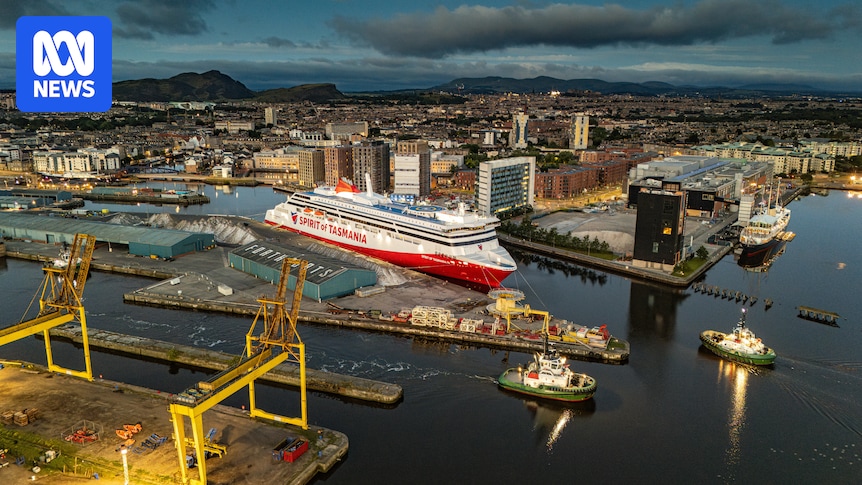
The Spirit of Tasmania IV has finally arrived in Tasmanian waters, marking the end of a protracted saga involving political disputes, lease negotiations, and substantial financial expenditures. The vessel, which spent months berthed in Scotland, has been at the center of controversy, prompting questions about the reasons for its extended stay abroad and the financial burden borne by Tasmanians.
Documents obtained under Right to Information laws have shed light on the behind-the-scenes maneuvers, revealing a complex web of lease options and political sensitivities that kept the vessel idle in Leith, Scotland.
Secrecy and Political Sensitivity
The Tasmanian government faced criticism for its handling of the Spirit of Tasmania ferries, with critics questioning the necessity of double-page newspaper ads addressing the delays. The ferry operator, TT-Line, had appointed shipbroker Clarksons in December 2024 to explore potential lease options for Spirit IV while it remained in Scotland.
According to the documents, one leasing offer came from a broker representing the Scottish government. In January 2025, an email to acting TT-Line chief executive Kym Sayers and marine manager Andrew Coccoli revealed that Scottish officials were interested in inspecting the ship. The email raised questions about the vessel’s amenities and suitability for use as temporary accommodation.
“We understand the pros/cons of using a ship for this purpose, to ease the housing crisis, and the challenges we have to overcome,” the email stated. However, the short contract length and lack of windows in internal rooms were cited as potential issues.
The Scottish government requested confidentiality due to the political sensitivity of the issue, a request that underscored the delicate nature of the negotiations.
International Interest and Controversy
The Spirit of Tasmania IV’s potential use as temporary housing was not limited to Scotland. Documents revealed interest from the United States, where the vessel was proposed as a floating accommodation facility in California for displaced residents. The proposal included covering all associated port costs and positioning expenses.
Further inquiries came from parties interested in using the vessel for ferry operations between France and Algeria, as well as Greece and Italy. Despite these expressions of interest, the negotiations did not progress to a stage where a firm agreement could be presented to the TT-Line board or the government.
“Discussions continued over the coming weeks… [but] the negotiations did not get to the stage of being able to present a firm agreed position,” a briefing note for the Tasmanian government stated.
Financial Implications and Future Prospects
The financial impact of the Spirit of Tasmania IV’s prolonged stay in Scotland was significant. A document prepared by TT-Line on March 3 detailed the costs associated with berthing the vessel in Leith, amounting to approximately $4.3 million over seven months. In comparison, berthing in Tasmania was estimated to cost around $879,000 per month.
The delays and cost overruns have drawn sharp criticism from business and tourism groups in Tasmania, who have expressed frustration with the state government’s handling of the new vessels.
Despite these challenges, the Spirit of Tasmania IV is expected to begin operations around October 2026. Meanwhile, the second new vessel, Spirit of Tasmania V, remains in dry dock in Finland, with plans to bring it to Tasmania in the first half of 2026.
The Spirit of Tasmania IV’s journey underscores the complexities and challenges of international leasing negotiations, highlighting the need for transparency and careful management in government projects. As the vessel prepares to enter service, the lessons learned from its global leasing saga will likely inform future decisions in Tasmania’s maritime operations.





